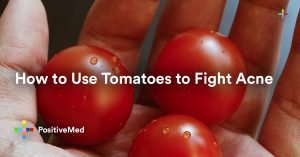
6 Things You Didn’t Know About Yeast Infection
Yeast infection isn’t exactly news. Not when three out of four women will have at least one during their lifetimes, and 50% of women will have two or more. But don’t let the fact that these infections are fairly common and treated with relative ease fool you into thinking you know all there is to know about them!
Here’s a brief recap of the facts, just to make sure everyone is on the same page. Yeast infections are vaginal infections affecting the vulva, or the area around the vagina. The infection caused by the Candida fungus, which is always present in the vagina, but sometimes goes a little haywire, resulting in too much of a good thing. Symptoms of a yeast infection can include burning, redness and swelling of the area; pain when urinating; pain during love making; and an odorless, white, cottage cheese-like discharge.
While the majority of women will get at least one yeast infection during their lifetimes, there are a few factors that increase the risk: pregnancy, a recent course of antibiotics and using hormonal birth control high in estrogen, for example.
Fortunately, yeast infections are easy to treat for the most part. Many women manage to deal with the problem using over-the-counter anti-fungal creams, tablets or suppositories. But it has to be said, these treatments don’t work for everyone. Women who experience repeated yeast infections may develop a resistance to OTC treatments. Not only that, not every vaginal infection displaying the symptoms noted above is a yeast infection. If you’ve self-treated for a few days and can’t see any difference, it’s time to visit the doctor.

Those would be the basic facts, and most women know them. Here are a few you might not know:
1- You don’t have to be an adult to get a yeast infection. They can affect women and girls of any age, although they’re rare before puberty and after menopause.
Related Link: Optimize Your Feminine Hygiene and Eliminate Yeast Infections With Coconut Oil
2- Far from protecting you, douches and vaginal hygiene products can actually increase your chances of getting a yeast infection! The best way to protect yourself is a daily vaginal rinse with warm water or very a mild soap. Dry with a clean towel, and you’re good to go!
3- Yeast infections can show up in other places. Your mouth, for example, where it’s called thrush and cottage cheese-like lesions blanket your tongue, cheeks and gums. Believe it or not, you can also get thrush from breastfeeding! If your nipples are sore for more than a few days; if they’re flaky, shiny, itchy or cracked, deep pink or blistered, it’s time to make that doctor’s appointment.
4- Men can get yeast infections, too. Unprotected contact with an infected woman can spread the fungus. In guys, yeast infections usually show up with itching and burning, possibly redness or a rash on the penis. Over-the-counter creams applied twice daily for about a week usually take care of the problem.
5- Recurring yeast infections can signal other, more serious problems—like diabetes, for instance. High blood-glucose can be a catalyst for increased yeast growth. Women with compromised immune systems are also vulnerable to repeat infection, so if you get several yeast infections a year, you’ll want to get checked out.
6- Your diet may be a factor. Like your carbs? Then you may not want to hear that high carbohydrate intake has been linked to increased Candida levels. Taking probiotics or eating yogurt with live cultures, on the other hand, may decrease your risk.
Always good to end on a high note, right?





